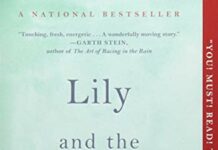
Ebook Info
- Published: 2016
- Number of pages: 384 pages
- Format: Epub
- File Size: 3.13 MB
- Authors: Sarah Gristwood
Description
Sixteenth-century Europe saw an explosion of female rule. From Isabella of Castile, and her granddaughter Mary Tudor, to Catherine de Medici, Anne Boleyn, and Elizabeth Tudor, these women wielded enormous power over their territories, shaping the course of European history for over a century. Across boundaries and generations, these royal women were mothers and daughters, mentors and protées, allies and enemies. For the first time, Europe saw a sisterhood of queens who would not be equaled until modern times. A fascinating group biography and a thrilling political epic, Game of Queens explores the lives of some of the most beloved (and reviled) queens in history.
User’s Reviews
Amazon.com Review An Amazon Best Book of December 2016: When chess was first played, all the human figures were male. Only around the eight century did the Queen appear and not until the sixteenth century did the Queen become the most powerful piece in chess. Credit for this development is given to Isabella of Spain, the “warrior queen,” herself a skillful and enthusiastic chess player. Coincidentally, from Isabella’s accession to the throne in 1474 through the next hundred years, an Age of Queens flourished to a degree not seen before or since, with women on the thrones of many European countries. Both the influence of chess and Isabella of Spain feature heavily in Game of Queens. Though few of the female regents met one another, the passage of power and influence (including strategic chess plays) flowed from mothers to daughters and from mentors to protegees, across borders and across generations. The stories of some of the greatest (and hated) queens are told here (in an amusing author’s note, Gristwood points out that in a story with sixteen protagonists, eight of them are named either Mary or Margaret and she absolves herself of responsibility for any confusion that may result). Against a backdrop of religious reformations and the innovations of the new age, Gristwood deftly shows how the explosion of female rule came about, the machinations and power plays behind the thrones, and how the Age of Queens ultimately played out; unsurprisingly, fidelity and fertility were used to create scandals that threatened to topple each Queen. From Isabella of Castile and her granddaughter Mary Tudor, to Catherine de Medici, Anne Boleyn, and Elizabeth Tudor, what could be a dry examination of policy and power becomes, in Gristwood’s hands, a lively, accessible, occasionally hilarious, absorbing account of an astonishing era. –Vannessa Cronin, The Amazon Book Review Review “Densely packed with fascinating material, this immensely ambitious undertaking succeeds triumphantly.” ―Literary Review (UK)”A fascinating work of world and women’s history.”―Booklist”Gristwood’s fresh take on a well-documented period and the achievements, failures, and relationships of some of Europe’s most powerful players is intriguing, cohesive, and accessible.”―Publishers Weekly”[Game of Queens] casts a well-researched time period in an intriguing light…. Readers of popular history, especially of Tudor England, and of women’s history will find much to enjoy.”―Library Journal”Sarah Gristwood handles multiple narrative strands with tremendous finesse, dexterously synthesizing the stories of women who, in many cases, never met but whose lives intertwined in manifold ways.”―Literary Review (UK)”Game of Queens is a magnificent exploration of a most remarkable group–the women who ruled sixteenth century Europe. Sarah Gristwood gives us impeccable research, incisive attention to detail, and exquisite writing as she investigates these truly fascinating women and their lives of courage, tribulation, and determination. Absolutely unputdownable.”―Kate Williams, authorof England’s Mistress”Sarah Gristwood’s study of the brilliant, beleaguered, and often bloody difficult women who kept Europe going in the sixteenth century is compelling, clear-eyed, beautifully rendered, and never-more-timely.”―JessieChilds, author of God’s Traitors: Terror and Faith in Elizabethan England”In her elegant and engaging style, she combines incisive detail with over-arching and eye-opening themes of queenship and the role of women in a male-dominated world. This book is a wonderful, timely contribution to our understanding of the period, and a pacy and illuminating good read.”―Alison Weir, authorof The Lost Tudor Princess
Reviews from Amazon users, collected at the time the book is getting published on UniedVRG. It can be related to shiping or paper quality instead of the book content:
⭐ Detailed and wonderfully written book celebrating powerful queens of Western Europe. Starting with Isabella of Spain and ending with Elizabeth I. Gristwood writes of the various women from England, The Netherlands, Spain, Hungary, and France and how they impacted history. Isabella of Spain broke the mold as a warrior queen, setting the precedent of a woman taking control of her country as well as standing beside her troops in battle. With each new personality, Gristwood shows how they influenced the next generation of queens in training. Isabella’s fierce ability to govern and defend her country set the example for her own daughter Katherine of Aragon to act as regent in Henry’s absence and defeat the Scots at Flodden. Similarly, the author compares Margaret Tudor’s role in Scotland as well as Anne of France’s impact on the girls she mentored. The author moves through time, describing the dynamics of Marguerite of Savoy’s relationship with both her brother, Francis I and her mother, Louise of Savoy. Each new era brings a widening influence affecting women across Europe, the older queens tutoring the younger girls in their future roles. Interestingly, she writes that Anne Boleyn’s failure and ultimate downfall may have been the result of her not being an actual princess, her common roots leaving her unprepared the navigate the dangerous shoals of palace politics. She asserts that Boleyn was so caught up in the idea of courtly love, she had no understanding of when to stop and perhaps protect herself. She shows the differences of a political savvy Marguerite of Navarre played with her brother, the king when he forced an undesirable marriage on her daughter. Marguerite understood the dangerous dance of when to push and when to retreat, unlike Anne who did not. Mary of Hungary, Catherine de Medici, Elizabeth 1, Mary of Guise, Mary of Scotland, are a few of the ruling queens mentioned. The times created women who learned how to steer the world, shaping bloodlines as well as borders with quiet strength. They changed what they believed in with passionate dedication proving leadership did not belong solely in a king’s hands.Interesting, at times, riveting, this is a fascinating glimpse into a world that is too often overshadowed by the achievements of kings rather than the women who surrounded and influenced them.
⭐ Fascinating read! I’m well read in history,but didn’t know all the details of these 16th century queens who either solely reigned or were the powers behind the thrones of their absent brothers or young sons, While all this was going on in Spain, France, England, Scotland and the Holy Roman Empire, the Reformation was having an enormous impact on the very core of European life. The author does a great job interweaving the stories of these women and their influence on each other. Some were able to negotiate peace for their countries when their husbands/brothers could not. While others were locked in power struggles which were only resolved with lethal force.Thank goodness the author’s notes contain 1) a time line, 2) family trees and 3) thumbnail descriptions of the central characters (eight of whom are either named Mary or Margaret). I kept referring to those. Hard to keep track sometimes, but still an engrossing read.
⭐ I’ve read all of Allison Weir’s nonfiction books and I thought they were rough going but they look like Dick And Jane primers compared to this tome. I was so excited to read this, the idea of somebody finally shining a light on the lives of the women connected to the royalty who previously appeared to do it all by themselves. I’m so disappointed in myself but I have to abandon this, at least for now. I’m not having fun, I keep going over and over it, even made notes of everybody’s names so I could go into wikepedia and try to piece it altogether from additional clues there. It’s hopeless. I’m not sure what a writer would have do to pull this off in a way that would make it less of a chore, or maybe I’m getting senile! Apparently lots of other people seemed to have made it through okay, and maybe I would too by 2022, but I’m 75 and may not have enough time left! I give up, for now at least. She’s a good writer, though.
⭐ Europe during the sixteenth century was unusual in that many of the kingdoms during that time had females in charge. Isabella of Castile, her daughter Katherine of Aragon, and her granddaughter Mary Tudor, Catherine de Medici, Anne Boleyn, Elizabeth Tudor, Margaret of Austria and Louise of Savoy – what an interesting time for these women to live in.The book is well researched and well written, but there’s such an abundance of characters that they all get confusing at times. It would have been nice to have a map included with each woman listed on the country of association.
⭐ I wish I could give it 4.5 stars, because it has information I have not found anywhere else! And the book is and so interesting!However, it needs a better editor. Some of the writing is impossible to tease out the meaning. My daughter and I parsed one “sentence” for an hour trying to figure out the real meaning… the use of comma’s in some places is completely random and make it humor, which is not the intent.And of course, as much historical writing does, it sometimes puts you to sleep…Definitely worth the effort to read, all the way to the end.
⭐ Disclaimer: I have had the pleasure of meeting and travelling with the author Sarah Gristwood and she is wonderfully informative and entertaining in person as well.I am not a historian, but an ardent fan of history. Game of Queens looks at the 16th century from the unique perspective of several queens and queen consorts who ruled and had a significant impact on the events of the day. The book explores the interactive nature of their relationships and their influence across the European continent. In a world that was so dominated by men, these queens managed to become major players in their kingdoms.The book is organized in chronological order by major events in Europe, and highlights the roles the Queens played amidst the political and religious conflicts that were brewing.This is a thoroughly enjoyable read and a must-have for your history library!
⭐ Simply one of the best books that brilliantly illustrates queenship, giving other examples of female leadership, and highlighting female bonds from the late medieval and renaissance eras. Whereas other books focus solely on Tudor queens and matriarchs, Ms. Gristwood chose to focus on other key figures who were part of the European stage, also mentioning other women who because of their common struggles and their gender, chose to rely on some of these formidable women.Another thing that Sarah Gristwood does is show us just how brutal -and complicated- these eras were. These women took refuge in their religion, using it as a justification for their actions or to validate themselves as regents, queen regnants or governors, but painfully brushed it aside when it came to their survival and their kingdom’s future.
⭐ I wouldn’t have thought so many different people’s stories could be woven together so seamlessly. But Sarah Gristwood has done it and done it well. She includes all the obvious major names from the time; Anne boleyn, Catherine di Medici… but also lesser known (to me at least); Margaret of Parma, Marguerite of Navarre…Very interesting read!
⭐ I really enjoyed this book and had trouble putting it down once I had started it. I have been reading several books recently about Elizabeth I, and it was great to learn about other women in power during that time period. It was really interesting to me to see how some of these ladies paved the path for future queens, during a time where even higher born women did not have much power. Gristwood seems to really know the subject well, and keeps it interesting to read.
⭐ A great reading. Learned a lot about women’s rulers in that particular period in history. Definitely suggest reading it, so interesting, well researched, engaging, easy to follow. Waiting for more on that same subject from this very gifted author.
Keywords
Free Download Game of Queens: The Women Who Made Sixteenth-Century Europe in Epub format
Game of Queens: The Women Who Made Sixteenth-Century Europe Epub Free Download
Download Game of Queens: The Women Who Made Sixteenth-Century Europe 2016 Epub Free
Game of Queens: The Women Who Made Sixteenth-Century Europe 2016 Epub Free Download
Download Game of Queens: The Women Who Made Sixteenth-Century Europe Epub
Free Download Ebook Game of Queens: The Women Who Made Sixteenth-Century Europe





